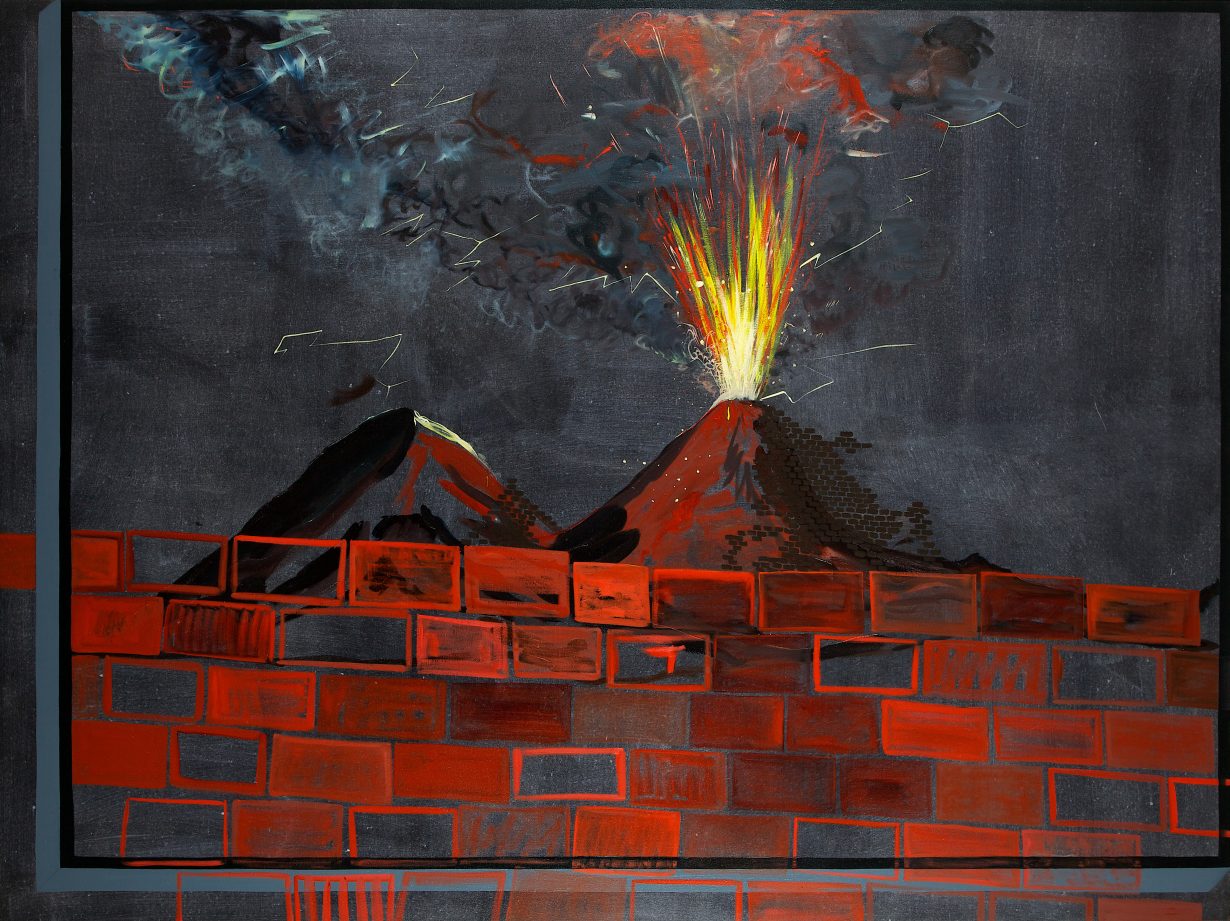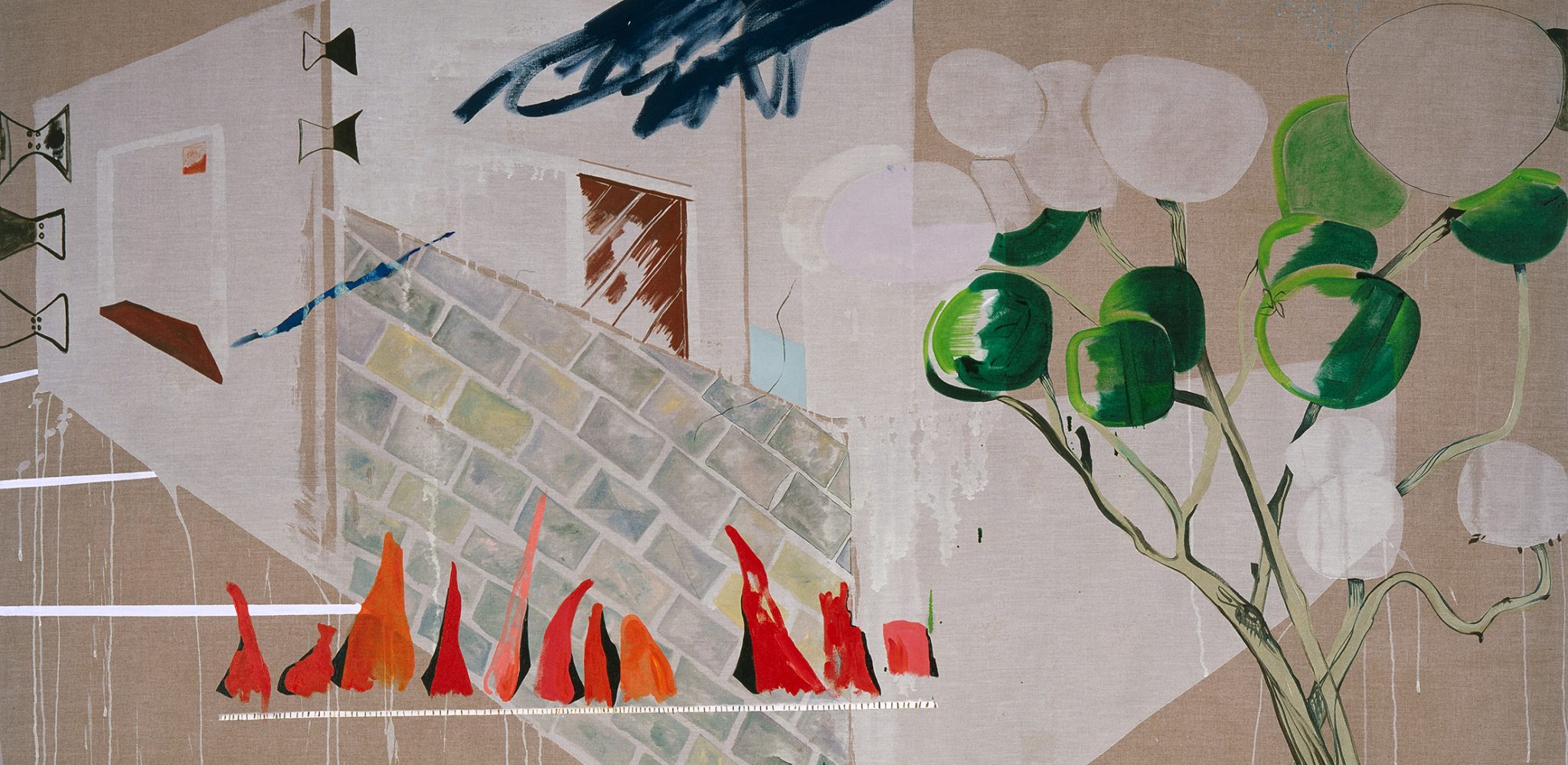On view at Hastings Contemporary, the artist’s paintings are full of mischievous formal devices that constantly remind you that an image is a magician’s trick, ready to be found out
Caragh Thuring’s paintings are dizzying, layered experiences in which representation is always set up for a fall; paintings about painting, full of mischievous formal devices that constantly remind you that an image is a magician’s trick, ready to be found out. All those overserious, now-archaic modernist preoccupations – the frame of the canvas, the edge, illusion and flatness – get domesticated and deflated. One of the earliest works here, Palm Springs (2009), is a catalogue of motifs that Thuring has pursued with increasing sophistication ever since, a field of unprimed canvas, onto which basic forms flicker into representation: groups of irregularly shaped green patches become the foliage of a tree; a brick pattern becomes a wall; behind it, rectangles of thin white become a building; windows and louvre blinds float about, while towards the top a heavy scribble of dark blue brushwork hangs, almost becoming a raincloud.
Yet Thuring’s self-conscious highlighting of painterly mechanics is never distanced or cynical. These are images increasingly drenched in everyday life and things – fastfood, frankfurter sausages, trees, walls, windowsills, canal drawbridges, shipping cranes, cascades of cryptocurrency coins, tartan patterns, sportswomen, volcanoes, nuclear submarines. All these, however, engage in a kind of comedy about the fragility of their own self-evidence; the dark profile of the submarine that appears in The Silent Service (2016) is little more than a curved wedge of black, whose straight lower edge indicates only where the sea, implied by raw canvas, should be. Such emasculated grandeur is part of Thuring’s gender-tinged humour (of which David Gandy, 2014 – three male models made up of brick pattern, posing ridiculously in their white briefs – is the funniest). In August 1779 (2011), a volcano in eruption (Vesuvius, if you trust the date) is seen as if from behind a low wall of semitransparent hot-red brick shapes, itself inside a window frame; in the adjacent Eruzione del (2019), another volcano puffs smoke dramatically in a grisaille landscape, but an overlaid grid of lines and cracks suggests that the painting really depicts an image itself painted onto a wall of old tiling. A sort of vertiginous collapse of time and place occurs, ‘there’ and ‘here’ further tangled because Thuring’s canvas is woven with a dark version of the image, tapestrylike, in the fabric itself.

This virtuosic technique Thuring has developed – images of previous paintings woven into custom-made canvases, onto which she further paints – is an acute disruption of the old surface–image dichotomy that still haunts contemporary painting. But paradoxically, it makes for a more vivid attention to the kaleidoscope of visible life that eventually appears, vulnerable as it is. Thuring’s painting are objects in which the act of seeing becomes profoundly self-aware, since the life depicted comes into view just at the moment when what depicts it self-destructs.
Caragh Thuring at Hastings Contemporary, through 12 March
